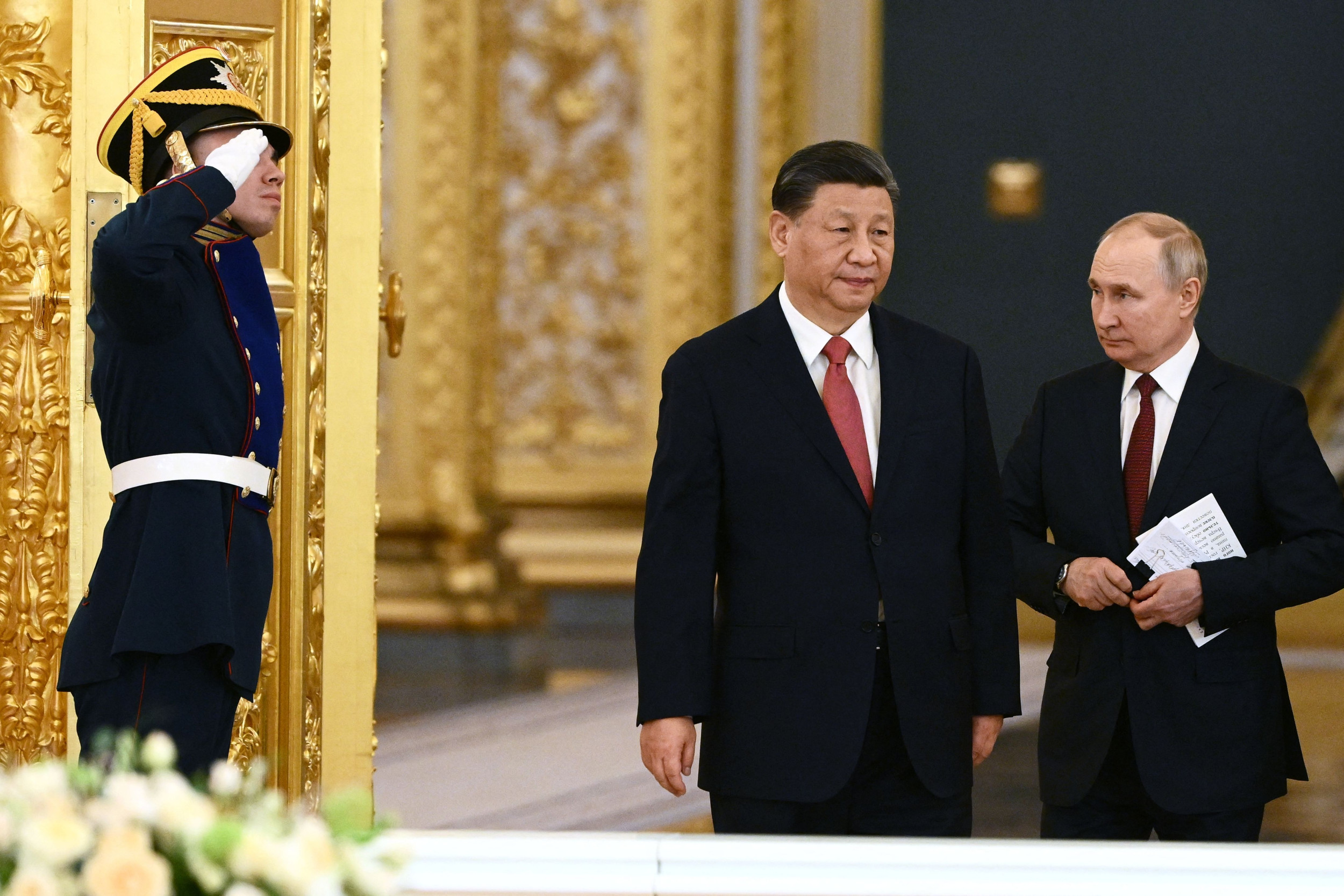China Military Parade: Putin and Kim Join Xi in Show of Strength as New Weapons Unveiled
China staged one of its largest and most symbolic military parades in recent years, unveiling a range of advanced weaponry while hosting Russian President Vladimir Putin and North Korean leader Kim Jong Un alongside President Xi Jinping. The event, watched closely by the world, sent a powerful message of unity among the three nations at a time of heightened geopolitical tensions, shifting global alliances, and mounting challenges to Western influence.
A Spectacle of Power in Beijing
The parade, held in Beijing’s historic Tiananmen Square, showcased China’s military modernization and growing strategic ambitions. Thousands of troops marched in tightly coordinated formations, followed by an array of tanks, armored vehicles, drones, hypersonic missiles, and next-generation fighter jets.
For China, the display was not only a demonstration of national pride but also an assertion of its capability to defend its sovereignty, project power regionally, and challenge the dominance
President Xi, standing alongside Putin and Kim, emphasized themes of strength, resilience, and cooperation. In his opening remarks, Xi hailed the parade as a celebration of “peace through strength” and a reaffirmation of China’s role as a global power.
The Presence of Putin and Kim: Symbolism Beyond Borders
Putin’s appearance: Coming amid Russia’s ongoing war in Ukraine and Moscow’s confrontation with NATO, Putin’s presence symbolized a strengthening Moscow-Beijing axis. Both nations have repeatedly pledged to expand strategic cooperation, from military technology to energy trade.
Kim Jong Un’s participation: For North Korea, which remains isolated under sanctions, the parade offered a rare opportunity to stand visibly with two of the world’s most influential leaders. Kim’s trip also suggested expanding military collaboration with both China and Russia, particularly in areas such as missile technology and defense logistics.
Together, the trio projected an image of solidarity in defiance of Western pressure. Their handshake on the reviewing stand was widely interpreted as a symbolic alignment of three nuclear-armed powers against what they describe as Western “hegemony.”
New Weapons Unveiled: A Look at China’s Military Advances
The highlight of the parade was the unveiling of several advanced weapons systems, many of which are designed to counter U.S. technological superiority in the Pacific. Some of the most notable systems included:
Hypersonic Missiles – China revealed its latest hypersonic glide vehicle, capable of traveling at speeds exceeding Mach 5 and maneuvering unpredictably to evade missile defense systems. Military analysts believe this weapon is aimed at deterring U.S. aircraft carriers in the South China Sea.
Next-Generation Stealth Drones – The parade showcased new long-range reconnaissance and combat drones, equipped with AI-assisted targeting systems. These drones reflect China’s push to dominate the future of unmanned warfare.
DF-41 Intercontinental Ballistic Missiles (ICBMs) – The DF-41, capable of carrying multiple nuclear warheads, was prominently displayed. With a range exceeding 12,000 kilometers, it can strike any target within the continental United States.
Laser Defense Systems – For the first time, China revealed prototypes of ground-based directed-energy weapons, which are believed to be capable of disabling enemy drones and satellites.
J-20 Fighter Jets – Squadrons of China’s advanced stealth fighters performed flyovers, emphasizing the modernization of the People’s Liberation Army Air Force (PLAAF).
The array of weapons demonstrated not only China’s technological progress but also its determination to reduce reliance on foreign arms suppliers and to compete with U.S. and Russian defense industries on the global stage.
Geopolitical Context: Why This Parade Matters Now
The parade took place against a backdrop of escalating global tensions. Several factors made the timing significant:
U.S.-China Rivalry: From trade disputes to military standoffs in the South China Sea and Taiwan Strait, relations between Washington and Beijing remain fraught. The parade was widely seen as a direct message to the U.S. about China’s readiness to defend its interests.
Russia’s War in Ukraine: With Western sanctions tightening around Moscow, Russia is increasingly dependent on China for economic and diplomatic support. The joint appearance by Xi and Putin reinforced their growing partnership.
North Korea’s Provocations: Kim Jong Un has ramped up missile testing in recent months, signaling defiance against international sanctions. His participation highlighted Pyongyang’s intention to remain a pivotal player in regional security dynamics.
Shifting Alliances: Across the Global South, many nations are reassessing their partnerships amid disillusionment with Western institutions. By putting on such a spectacle with Putin and Kim present, Beijing sought to portray itself as a leader of an alternative global order.
Messages to the World: Multipolarity and Defiance
The central theme of the parade was unmistakable: the world is moving toward multipolarity, and the Western-dominated order is being challenged.
By appearing together, they conveyed several messages:
Unity Against Sanctions – All three nations face sanctions from the U.S. and its allies. The event demonstrated their willingness to support one another economically and militarily despite isolation attempts.
Military Deterrence – The unveiling of advanced weapons was meant to warn rivals that any confrontation could escalate quickly and severely.
Political Symbolism – Beyond weapons, the optics of Putin and Kim in Beijing sent a clear signal of solidarity that will resonate across Asia, Africa, and Latin America, where many nations are reconsidering alignment with Western powers.
Domestic Impact: Nationalism and Unity in China
Inside China, the parade was broadcast across state media as a proud moment of national achievement. Xi Jinping has long tied the Communist Party’s legitimacy to military strength and technological progress.
For ordinary Chinese citizens, the parade reinforced a sense of pride in the country’s rapid rise and ability to command global attention. Nationalism, already strong in Chinese society, was further boosted by the spectacle of foreign leaders standing alongside Xi in recognition of China’s power.
Reactions from the West and Beyond
International responses were swift:
United States: U.S. officials downplayed the parade, calling it “political theater,” but expressed concern about the unveiling of new hypersonic and nuclear-capable systems. Pentagon analysts stressed that such displays underscore the urgency of strengthening U.S. alliances in Asia.
Europe: European leaders condemned the event as an “axis of authoritarianism,” warning that closer ties between Beijing, Moscow, and Pyongyang could destabilize global security.
South Korea and Japan: Both nations voiced alarm at North Korea’s prominent role in the parade. Seoul described the event as “deeply concerning,” while Tokyo reiterated its commitment to strengthening missile defenses.
Global South: Reactions were more mixed. Some nations praised the event as a sign of resistance against Western dominance, while others urged caution about potential escalations.
The Strategic Triangle: Xi, Putin, and Kim
Observers note that the emerging “strategic triangle” of China, Russia, and North Korea is not without its challenges.
China seeks stability to continue its economic growth, while Russia and North Korea thrive on confrontation.
Moscow and Pyongyang may push Beijing toward greater risk-taking than it prefers.
Economic disparities among the three are vast—China’s GDP dwarfs both Russia’s and North Korea’s combined.
Nevertheless, the mutual benefits—military cooperation, political support, and economic exchange—are strong enough to hold the partnership together, at least in the near term.
Looking Ahead: What This Parade Signals for the Future
The military parade in Beijing was more than a showcase of weapons; it was a carefully choreographed geopolitical statement. As the U.S.
The event is likely to accelerate arms races in the region, prompt further tightening of Western alliances, and deepen divisions in global governance institutions.
In essence, the parade illustrated the contours of a new Cold War–style competition, one where technology, alliances, and ideology intersect. For China, Russia, and North Korea, it was both a warning to their rivals and a promise to their citizens: they intend to play a defining role in the future of world order.
Conclusion
Beyond the spectacle, the event showcased advanced weapons, reinforced nationalist pride, and signaled a determination to challenge Western influence.
As the world digests the implications, one thing is certain: the Beijing parade was not just about military power—it was about rewriting the narrative of global leadership in the 21st century.
http://China military parade Putin Kim Xi new weapons show of strength



